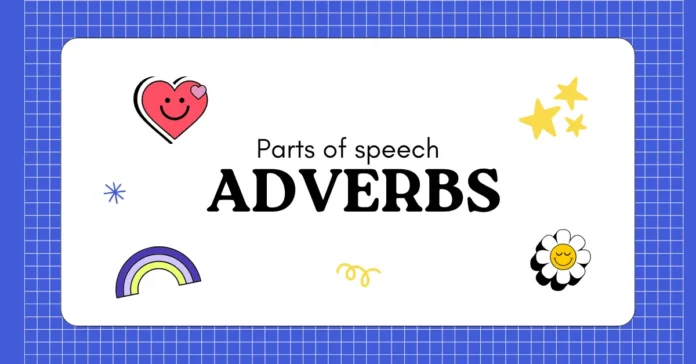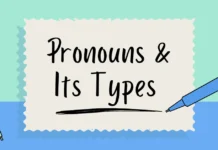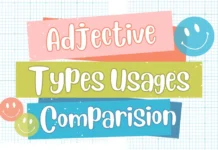Introduction to Adverbs:
An adverb is a word that modifies or describes a verb, adjective, or another adverb. It provides more information about the action, manner, time, frequency, degree, or place of the sentence. Adverbs are an essential part of speech and play a crucial role in enhancing the clarity and precision of a sentence.
Examples of Adverbs in English:
- She sings beautifully.
- He writes quickly.
- They played well.
- She speaks softly.
- He eats slowly.
Kinds of Adverbs and their Sub-Clauses
- Adverbs of Manner: These adverbs modify verbs and show how an action is done. Example: She speaks clearly.
- Adverbs of Time: These adverbs modify verbs and indicate when an action takes place. Example: He came yesterday.
- Adverbs of Place: These adverbs modify verbs and show where an action occurs. Example: She went outside.
- Adverbs of Frequency: These adverbs modify verbs and show how often an action occurs. Example: He always arrives on time.
- Adverbs of Degree: These adverbs modify adjectives, adverbs, or verbs and show the extent or intensity of something. Example: She is extremely talented.
Position Usage of Adverbs
- Adverbs of Frequency usually come before the main verb. Example: She always reads the newspaper.
- Adverbs of Manner usually come after the verb. Example: He speaks English fluently.
- Adverbs of Time can come at the beginning or end of a sentence. Example: Yesterday, she visited the museum. OR She visited the museum yesterday.
Comparison of Adjectives and Adverbs:
Adjectives modify nouns, while adverbs modify verbs, adjectives, and other adverbs. Adjectives describe the qualities of a noun, whereas adverbs describe the way in which an action is done.
- Adjective: The movie was boring.
- Adverb: He acted boringly in the movie.
Use of Adverbs
- She dances gracefully.
- They played brilliantly.
- He smiled warmly.
Clear Confusion Between Adverb and Adjective
An adjective modifies a noun or pronoun, whereas an adverb modifies a verb, adjective, or another adverb.
Example: Adjective: The blue car is fast. (modifying the noun ‘car’) Adverb: He drives fast. (modifying the verb ‘drives’)
Types of Adverbs
Adverbs of manner: These adverbs describe how an action is performed.
Example: He speaks softly.
Adverbs of time: These adverbs describe when an action is performed.
Example: We will meet tomorrow.
Adverbs of place: These adverbs describe where an action is performed.
Example: She looked everywhere.
Adverbs of frequency: These adverbs describe how often an action is performed.
Example: He always goes to the gym.
Adverbs of degree: These adverbs describe the intensity or extent of an action.
Example: She was extremely happy.
Adverbs of affirmation and negation: These adverbs indicate whether a statement is true or false.
Example: He definitely passed the exam.
Adverbs of reason: These adverbs explain the reason behind an action.
Example: She was upset because she failed the test.
Interrogative adverbs: These adverbs are used to ask questions.
Example: Where did you go yesterday?
Relative adverbs: These adverbs connect two clauses together and show the relationship between them.
Example: He drove the car where he wanted to go.
Conclusion:
Adverbs are essential in enhancing the quality of sentences and adding precision to language. It is necessary to understand the different kinds of adverbs, their sub-clauses, and the correct position of using them to communicate effectively. It is also important to distinguish between adjectives and adverbs to use them correctly in sentences.











